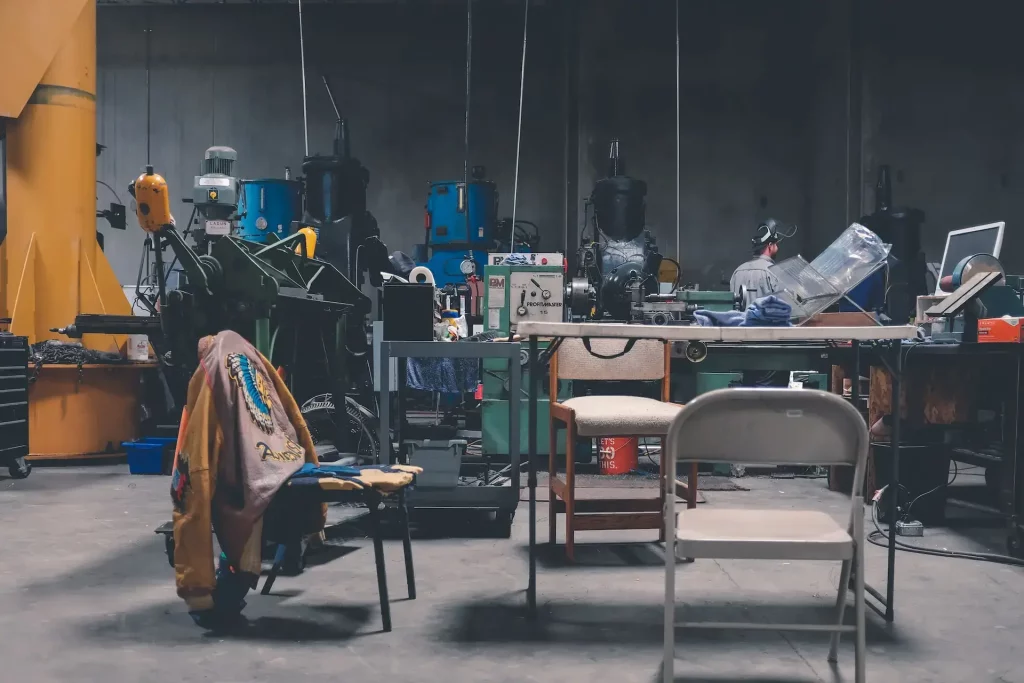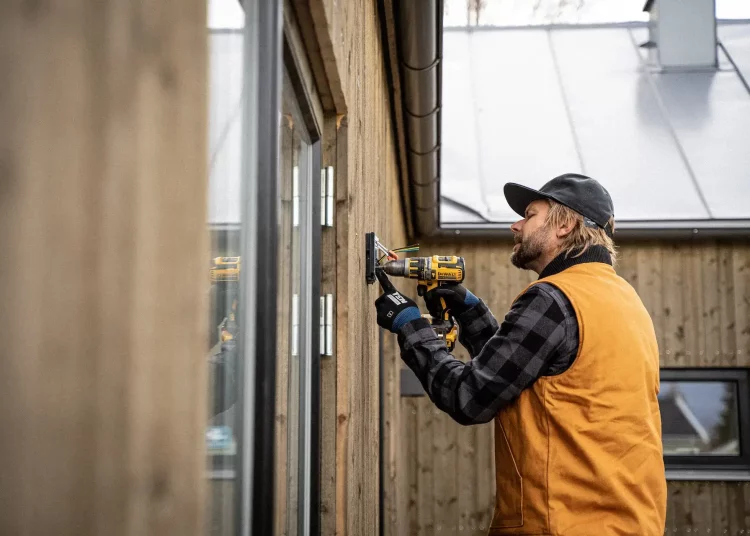Did you know that your garage is more tricky than you think? It’s not just a simple storage space for your car, tools, and expensive toys – it’s a complex system of parts that work together to protect your belongings from harsh weather conditions.
The garage door bottom seal is an essential component of your garage’s protective system. Without it, rain, snow, and wind could easily sneak in and damage your cherished possessions.
But don’t worry; there are various bottom seal options to choose from, each designed to keep your garage and everything in it safe and secure. So, it’s essential to understand the different types of seals and choose the one that fits your needs and garage setup.
What Are Garage Door Bottom Seals?
When a storm strikes, your garage and everything inside needs a strong shield to keep it safe. Even a tiny gap between the floor and your garage door can let in rain, snow, or other harsh weather. That’s where weather stripping, also known as gaskets or bottom seals, comes in.
Picture a flexible, rubbery material running along the bottom of your garage door, blocking out the elements. That’s a garage door bottom seal that protects your stored items from getting ruined by the weather.
Whether you’re dealing with heavy rain, fluffy snowflakes, or hailstones the size of golf balls, having a strong bottom seal can make all the difference in preserving your valuables.
How To Repair Or Install Garage Door Bottom Seal Types
Garage door bottom seal types play an important role in protecting your garage from the elements and keeping it dry and comfortable. However, these seals can become damaged or worn over time, leading to leaks and drafts.
If your existing seals are beginning to look a little worse for wear, it’s important to repair or replace them as soon as possible. Fortunately, this relatively easy process requires no specialized tools or expertise.
Preparing To Replace Your Garage Door Bottom Seal

Before replacing your garage door seals, taking a few precautions is important to ensure the job is done safely and correctly. Here are some tips to keep in mind:
- Safety first: Always use only the properly devised tools and devices to handle the job, and have someone there with you to ensure everything goes according to plan.
- Measure twice, cut once: Be sure to measure your garage door correctly before purchasing a new bottom seal, as different types of doors require different sizes.
- It’s a two-person job: Replacing your garage door bottom seal is best done with two people, so be sure to have someone there to help you.
The Importance Of Accurate Measurements
Before you go out and purchase one of the garage door bottom seal types as a replacement, it’s important to ensure you’re getting the correct size. Take close measurements of the garage door, starting with the width, then measure the length and height.
These measurements are essential for the new replacement seal, and you don’t want to end up with a seal that’s too small or too large.
Consider A Rubber Threshold
While you’re out purchasing a new bottom seal, consider purchasing rubber garage door threshold seals as well. A rubber threshold will give the seal extra holding power, which is essential for a garage door that is frequently exposed to extreme weather conditions.
The threshold will also help prevent water from seeping under the garage door, reducing the risk of water damage and rust.
Removing The Old Weather Trim
Before installing the new garage door bottom seal, you must remove the old, damaged one. You should always be careful when removing the old seal and rubber material, as doing so can result in scratched paint.
To start, open the garage door about 6 feet to give you plenty of room to work. Then, locate the gap at each end of the garage door, which will be at the bottom lined up with the seal.
Feed the bottom seal through one of these holes and pull it all the way through. The old weather trim should come right off.
Cleaning The Track
Before putting on the new weather seal, ensure that the track it slides into is perfectly clean. Over time, the track can accumulate dust, dirt, and webs, which can affect the performance of the new seal.
Use a stiff brush with metal fibers or mesh to scrub the track, making sure to scrub hard, as the dirt and grime can be quite caked on.
Installing The New Weather Seal
Once you remove your new weather seal and the old one, it’s time to replace it. You must push the new seal through the track you pulled the old one out of.
Before pushing the new seal through the track, lubricate it with a few drops of dish soap to prevent damage to the track or the seal. Push and pull the new seal through the track until it’s lined up and in place.
Installing A Threshold
If your garage door doesn’t have a track for the bottom seal, you’ll need to install a threshold. Before installing the threshold, clean the bottom of the garage door with a degreaser and water, ensuring it’s smooth and residue-free.
Roll the threshold into place using the hump of the garage door, and then cut it to adjust to the size of your garage door. Secure the threshold in place with adhesive.
You might be interested: Build a House in One Week – The Impossible Dream
What Garage Door Bottom Seal Types You Need To Know
| Type of Garage Door Bottom Seal | Features |
|---|---|
| Bulb |
|
| Beaded |
|
| J-type |
|
| T-type |
|
When buying a new garage door bottom seal, it’s important to choose the right one for your garage. Not all seals are the same – some are better for certain door shapes or styles.
For example, if your garage door has a T-shaped channel at the bottom, you’ll want to look for a seal specifically designed for that. And if it has a single channel, you might want a seal that can slide in like a beaded bottom seal.
But there’s even more to consider! Different types of seals are better at different things. Some keep the wind out better, while others are better at keeping out water and leaves. It’s up to you to decide which one will work best for you.
There are four basic types of garage door bottom seals to choose from. So, do your research and pick the best fit for your needs.
Bulb
A bulb-type garage door bottom seal is a must-have for your garage! The seal is designed to fit the floor of your garage perfectly, ensuring that the elements stay out and your garage stays protected. There are two options to choose from – T-shaped or P-shaped.
Both provide a strong barrier, keeping anything from entering or escaping. This means you’re conserving energy bills, ultimately saving you money on energy costs in the long run.
The bulb seal is ideal for even garage floors, with its circular bottom and T- or P-shaped top. Made of top-notch, weather-resistant materials that stay flexible in all temperatures, this seal will keep the elements – like heat, cold, rain, snow, and leaves out of your garage.
Beaded
The beaded garage door bottom seals are a unique option for those with perfectly flat garage floors. Unlike bulb-shaped seals, the beaded ones have a flatter design but still provide a tight and impenetrable seal.
They are typically 3 inches wide and feature a ribbed exterior to prevent freezing on the ground or product.
These seals are T-shaped and are meant to fit into double-channel retainers, with circular grooves for easy and quick installation. However, they aren’t ideal for uneven or curved garage floors as they don’t have the ability to conform to these types of surfaces like the bulb seals.
J-type
The J-type garage door bottom seals are a unique and effective way of safeguarding your garage. Named for the “J” shape created when the door shuts, it provides extra protection against wind and water. This seal creates a complete barrier outside the garage door, preventing any moisture or air from coming in or out. It has many uses, such as on shipping containers and storage units, so you can rest assured that it will offer your garage superior sealing power!
T-type
T-type weather seals are an excellent choice when dealing with uneven garage floors. The two-channel retainer has two Ts on each side that lock into place, forming a U shape similar to the bulb type, but the top is not closed off.
This type of seal can contour and adapt to the floor below, creating a tight seal against wind and moisture from rain. It’s reliable and long-lasting, perfect for preserving your belongings.
You might be interested: A Guide to Attic Fans: Cooling Your Home Efficiently
Know The Difference Before Repairing Or Replacing
Fixing or replacing your garage door bottom seal doesn’t have to be expensive or difficult. But don’t just grab the first seal you see! Take a look at the retainer on your garage door. Is it multi-channel or single-channel? This will determine the type of seal you need.
There are different shapes and sizes of seals available, so once you know which type you need, take some time to find one that best fits your garage door and meets your needs and preferences.




















